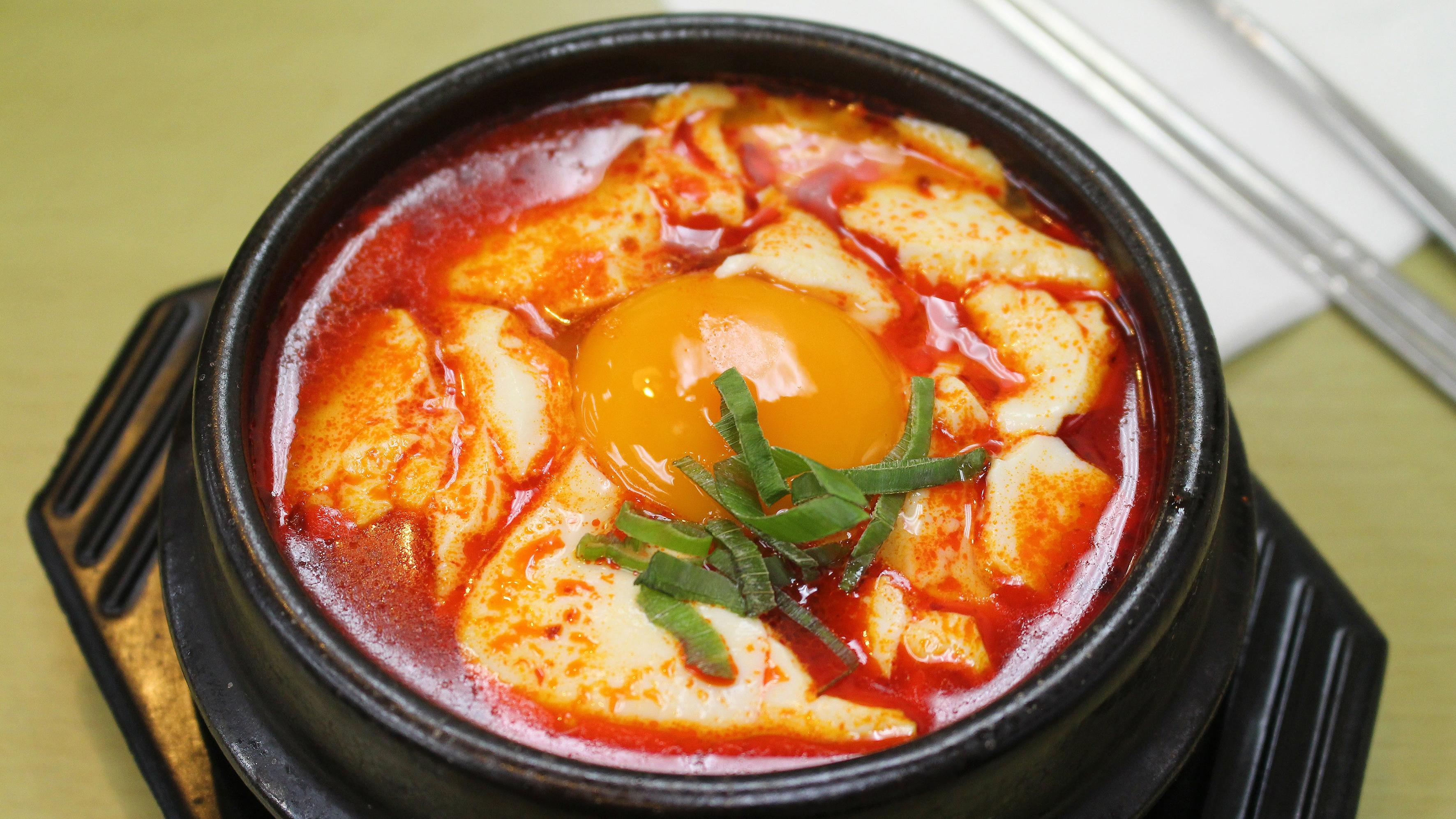Soondubu Jjigae, The Most Fiery Comfort Food You'll Ever Eat
This Korean tofu stew is blazing hot in multiple ways.
Everyone loves Korean food, from the barbecue to the instant ramyeon to the unique offerings of Korean-Chinese cuisine. But if you're starting to venture outside of bibimbap and want to delve deeper into all that Korean cuisine has to offer, we recommend turning your gaze toward its wide array of soups and stews. They're almost a required element at every meal, and if you're seeking complex flavors, this spicy tofu stew might just become your new favorite.
What is soondubu jjigae?
Soondubu jjigae is a fiery stew made with silken tofu, so named because it really is that soft, almost like a custard. And when I say "fiery," I mean it in multiple ways. Based off its bright red color alone, which comes from the addition of gochugaru (Korean red chile flakes), you can probably surmise that the stuff is, in fact, spicy.
But it also comes served in a porcelain or stone bowl that's been heated directly on the open flame of the stove, and it will almost always hit your table at a roiling boil—whatever you do, do not touch it. As in, as much as you'll want to start shoveling soondubu jjigae in your face, it's in your best interest to let it sit for a few minutes. My mouth has been burned more times than I'd like to admit.
Along with the silken tofu, you'll usually see onions, green onions, and sometimes mushrooms in soondubu jjigae; at specialty restaurants you'll be able to pick other ingredients to add, such as pork or seafood (the latter of which is my favorite version). Lastly, you'll oftentimes see a freshly cracked egg sitting in it, which you stir into the stew yourself. Don't worry; the intense heat from the stew will cook the egg for you. Some restaurants bring a whole egg for you to crack into the bowl on your own.
Where to find soondubu jjigae
As it's a popular Korean dish, soondubu jjigae is a meal that certain restaurants specialize in, and you can find the nearest one on Google Maps by searching for the stew by name. But it's also just a common menu item at many Korean restaurants in general, sometimes even at Korean barbecue restaurants.
There's also a growing chain of soondubu jjigae restaurants called SoGong-Dong, the majority of which are on the East Coast. The chain is growing, however; there are 14 locations, with new ones springing up in Chicago and the Midwest, including a forthcoming restaurant in Indianapolis. I wouldn't be surprised if SoGong-Dong eventually grew to be a much larger chain, as it seems to be primed for expansion due to the popularity of Korean food in America.
What's particularly notable about SoGong-Dong is the way you order soondubu jjigae there. It's a three-stage process: First you select your main flavor component, such as pork, beef, dumplings, clams, etc., then you pick your spice level, and then you choose whether or not you want rice or noodles accompanying it. The standard starchy component to have with soondubu jjigae is rice, however, and at most restaurants it's just served that way.
The food at SoGong-Dong is authentic and absolutely delicious. My mother loves the place and goes to visit regularly, even though it's a good drive from my family's house.
Personally, I think soondubu jjigae is a perfect winter dish, since it's hot and hearty, but it's something you'll grow to crave twelve months out of the year. There's just something about it that hits almost every comfort food note on the scale, and as long as you can tolerate a little heat, I'm confident you'll come to the same conclusion.
